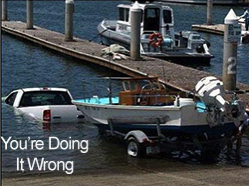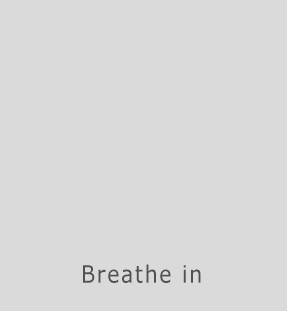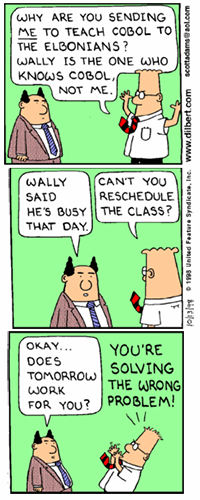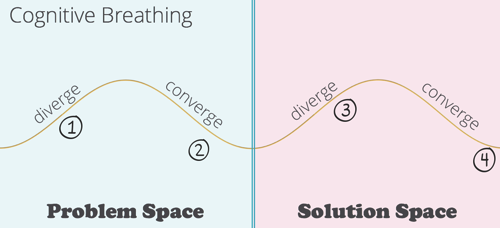
It’s not very often you hear an expert telling you “you’ve been doing it wrong your whole life,” especially when it comes to something as simple as breathing. Those are the words I heard two years ago as I started to have some problems with my voice. I learned that I am not alone in this Venn diagram. Roughly 90% of us are breathing wrong and with some simple changes we can improve a number of important things in our life.
It’s been two years since I was taught how to breathe properly and I’ve discovered that breathing shares a lot in common with thinking – most specifically problem solving. Breathing turns out to be an excellent model for problem solving and likely shares a similar failure rate. I use the term cognitive breathing to represent the tight relationship between breathing and thinking. That’s what we will be talking about today. More on that in a minute.
Turn your eyes from the screen and listen to your breath. How fast are you breathing? Does your belly move much? Does it change the longer you listen to it? I’d ask you to count your respiration rate, but it turns out that is nearly impossible to do by yourself as once you start measuring, you respiration rate starts to slow down.
 If you are like most, you were breathing somewhere around 15 breaths per minute which is considered too fast. Pulmonoligists agree that the best rate is somewhere around 8 breaths per minute. More importantly, we should be deep breathing through our belly rather than the shallow breathing occurring as our chest moves in and out. This base function is what I have had to relearn as my shallow breathing was causing me to push words out when talking that didn’t have enough breath to sustain them, thereby damaging my vocal chords.
If you are like most, you were breathing somewhere around 15 breaths per minute which is considered too fast. Pulmonoligists agree that the best rate is somewhere around 8 breaths per minute. More importantly, we should be deep breathing through our belly rather than the shallow breathing occurring as our chest moves in and out. This base function is what I have had to relearn as my shallow breathing was causing me to push words out when talking that didn’t have enough breath to sustain them, thereby damaging my vocal chords.
How is that after 55 years something I seemed to have been good at, breathing, could actually be causing me to now lose my voice? Yes, I was doing what was necessary to survive, but I was not doing it in a way that benefitted other parts of my life like stress management, lung capacity, blood pressure, and a myriad of other side-effects. In other words, I met the minimum requirements of breathing – survival.
Problem solving has a lot in common with proper breathing. We do it every single day and it is critical to sustaining life. We shallow think rather than shallow breathe thereby meeting the minimum requirements for the task. Like shallow breathing, shallow thinking can lead to problems down the road.
There are two distinct phases in breathing – inhaling and exhaling. Every time you inhale, you are taking in everything around you for possible consumption. Your lungs, surrounding thorax, and abdomen expand. Your body then decides what it wants to keep, exhaling everything else, until it is left only with the oxygen that it requires to repeat the process.
Problem solving has two distinct phases as well. Divergent thinking is equivalent to inhaling. The goal is to expand your mind with all of the possibilities. You prime it by loading it with data, experiences, research, and other sensory-rich input. Volume matters. Deep rich breaths; deep rich possibilities.
Convergent thinking is equivalent to exhaling – your goal is to remove all the things you don’t need, converging on only what is needed. Because of the natural repetition of expanding/contracting in both breathing and thinking I’ve started using the term cognitive breathing to represent this process

The first problem with the way most of us solve problems is due to our nature as problem solvers. Most of us pride ourselves on how fast we can find a solution, the equivalent of shallow breathing. We cut to the chase, bypassing the deeper inhaling process of divergent thinking. At best we might mix up the two phases by looking at a possible solution, assessing it, throwing it away and bringing in another possible solution. Rinse. Repeat. Wax on. Wax off. Much like breathing, you need to keep these two phases separated (queue the Offspring song) if you want the best results. Don’t start the convergent process until you finish your divergent process. This may seem like it will lengthen the process, but it really doesn’t. It actually keeps you from fumbling around with mediocre solutions that you will likely throw away and start on again.
 The second way we sabotage our own problem solving processes is that we often aren’t solving the right problem. The process above is great for solving a well-defined problem. Unfortunately, rarely do I see well formed problems. We often play a game of “give me a rock” trying to read the mind of our boss, or worse yet, the customer.
The second way we sabotage our own problem solving processes is that we often aren’t solving the right problem. The process above is great for solving a well-defined problem. Unfortunately, rarely do I see well formed problems. We often play a game of “give me a rock” trying to read the mind of our boss, or worse yet, the customer.
We focus on solving the problem quickly only to find out that we solved the wrong problem. This is very common, in all facets of life. In order to address the issue of a weak problem definition, let’s define two distinct spaces of cognitive breathing, the Problem Space and the Solution Space. These spaces are critical to cognitive breathing.
The goal of the Problem Space is to find the single best definition of the problem that is best to solve. The Solution Space’s goal is to take that problem and find the single best solution. Based on this definition, the problem space activities must precede the solution space activities.
Much like breathing, each of these spaces has an inhale and exhale component. We’ve already discovered how that works for the Solution Space. Start by using divergent thinking to expand all of the possible ways to solve the problem presented. Then, and only then, employ convergent thinking to hone in on the best one.
We use the same process for the Problem Space, just substitute problem for solution. Start by using divergent thinking to expand your understanding of all of the ways a problem manifests itself in the space you are working. Then converge on the single best problem definition to feed the Solution Space.
There are a number of techniques that can help you with the divergent thinking part of the Problem Space. It is an uncomfortable experience for those new to this part of the process. I find the 5 Whys always useful. The folks over at Litemind also have some nice starter suggestions. There are many time-proven techniques. User Experience folks are especially good resources for teaching many of the more advanced techniques. Buy one lunch and tap their mind – they love free food.

To really change to be a problem solving person/team, you have to change the natural cognitive breathing you have been doing for so very long.
- Inhale the Problems. Use divergent thinking to find all the candidate problems, especially the ones being possibly masked by what you think the problem is. Stay here a lot longer than you feel comfortable!
- Exhale all but the best problem definition. Use convergent thinking to weed out the weaklings.
- Inhale all the possible solutions to the newly defined problem. Use divergent thinking to discover a larger list of potential solutions.
- Exhale all but the best solution. Use convergent thinking to weed out the weaklings.
- Collect Nobel Prize.
There, that’s it. The problem solving process in two breaths. Inhale/diverge and exhale/converge in the problem space and repeat for the solution space. I guarantee you that the hardest obstacle to overcome will be your compulsion to jump to a solution while in the problem space. Everybody does. If you can resist I think you will find that you will get to the best solution the quickest.






